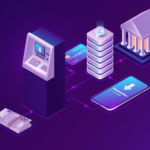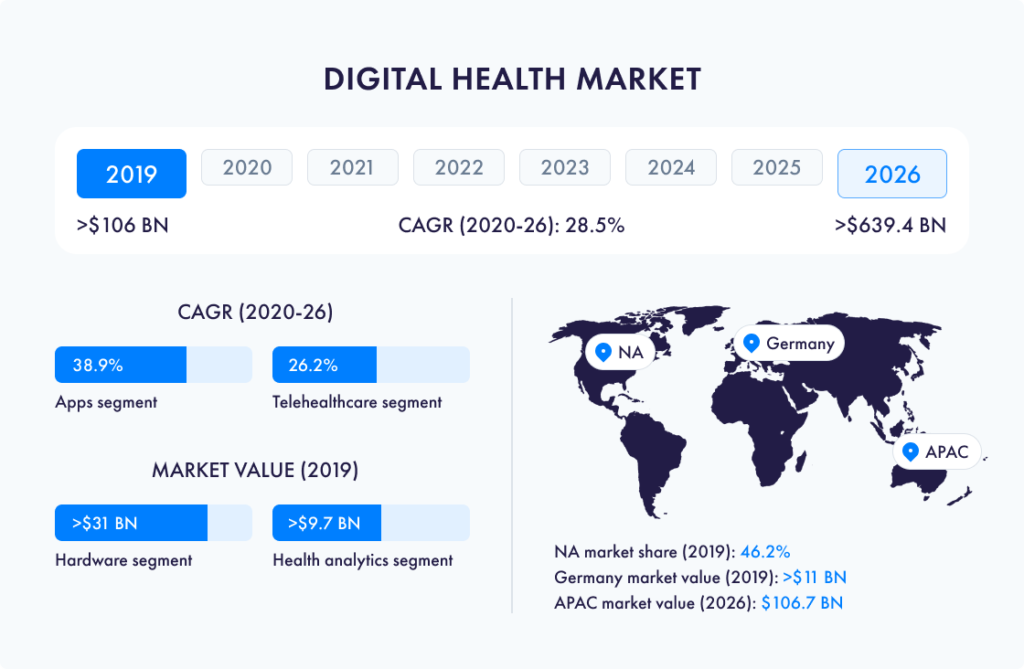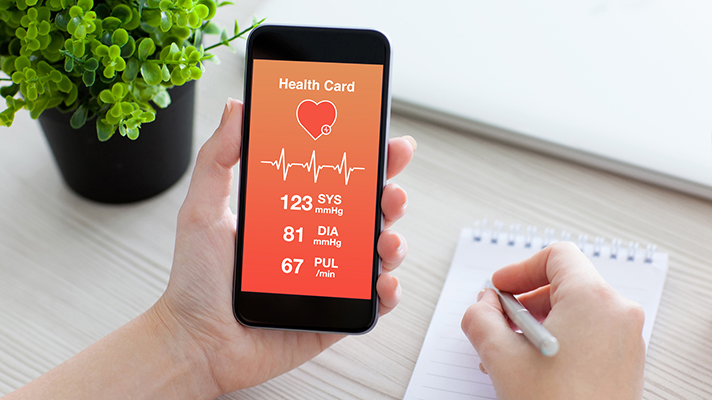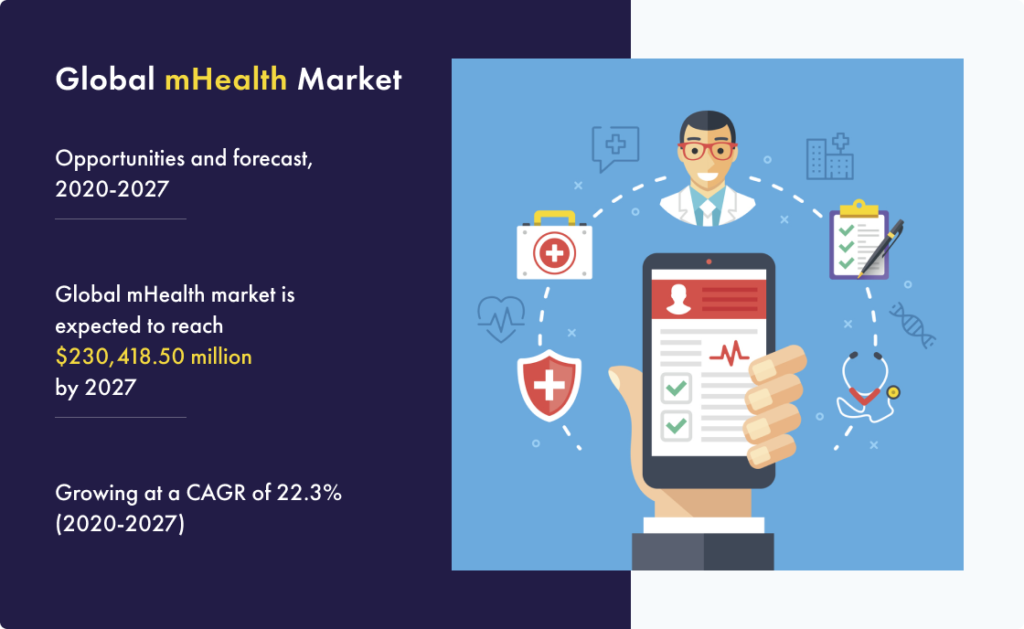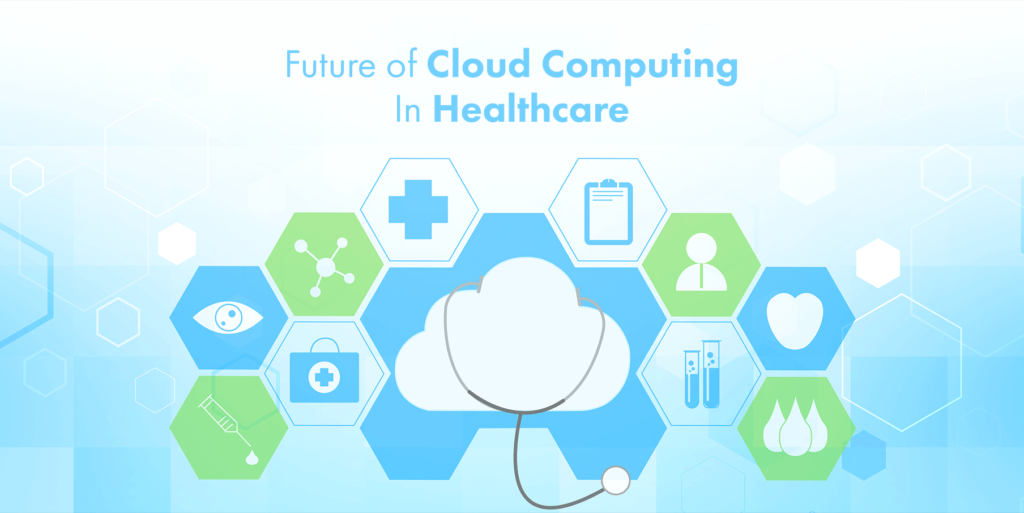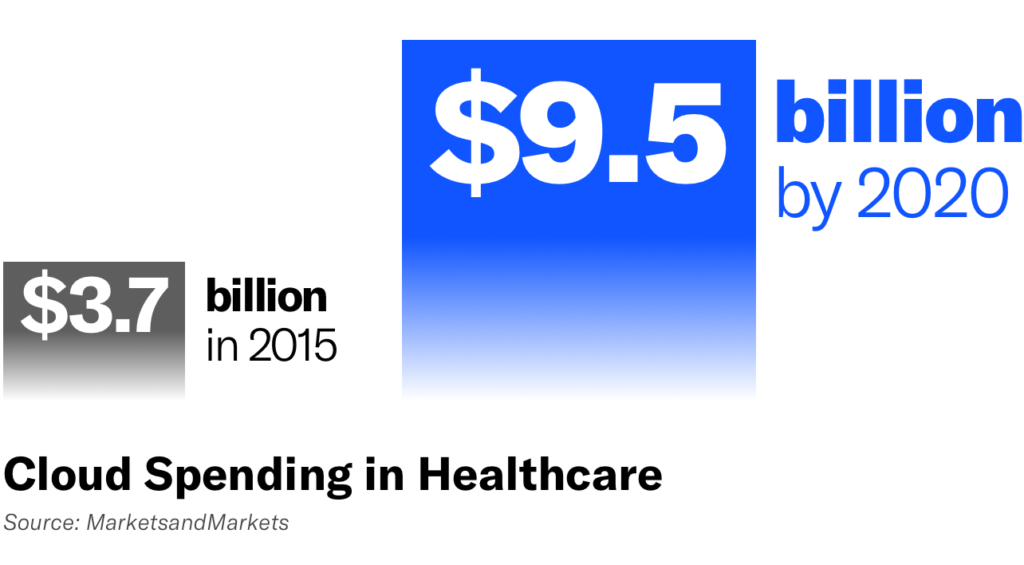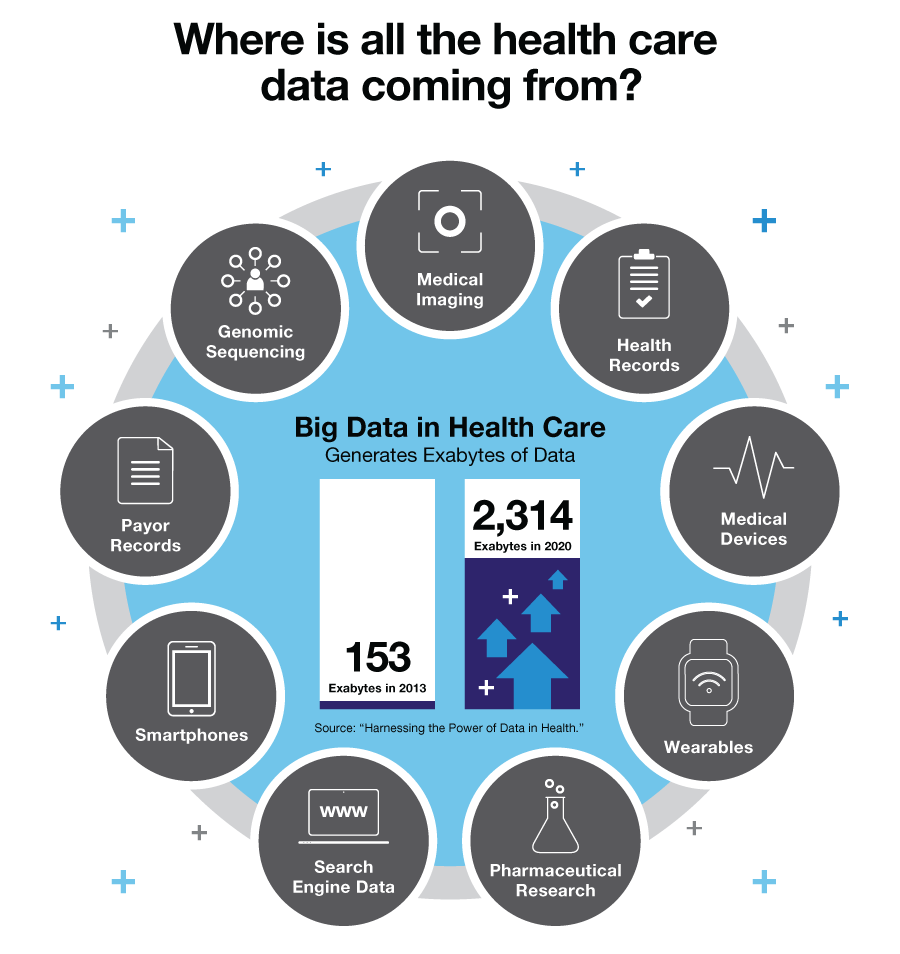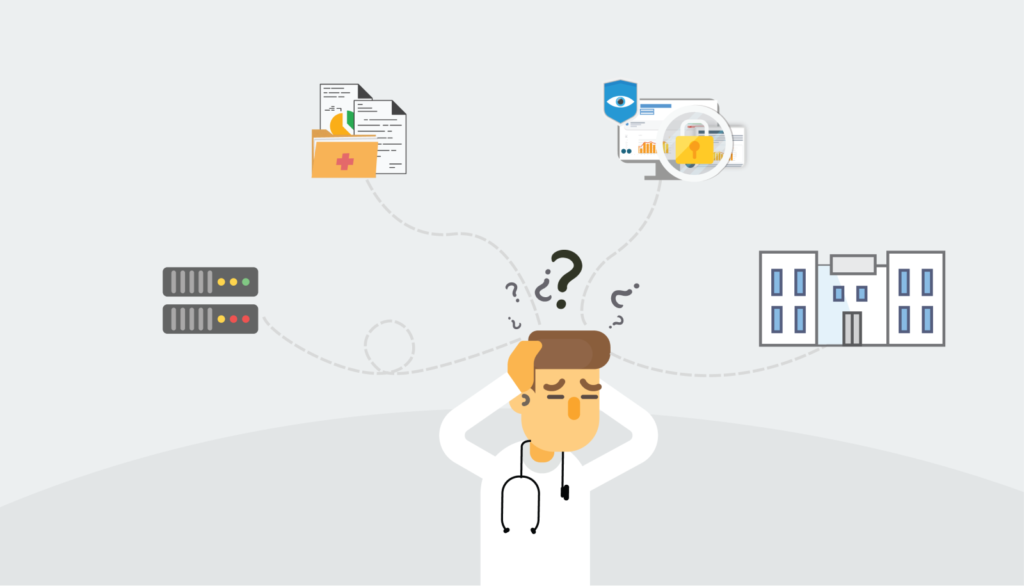Healthcare’s Switching to Digital Space: HealthTech Opportunities and Challenges
Today the healthcare sector is a multi-trillion giant at a crossroads. It was too reliant on outdated and inefficient modes of working too long. Being overburdened by stretched budgets and formalism, the industry is seeking ways to better nearly every area.
That the medical field is transforming is a given fact. The current system built on a fee-for-service model of care delivery is being upended. The change leans towards switching the emphasis from a volume- to value-based care, requiring better patient outcomes for less cost. It includes preventive therapies and proactive care approaches that demand data-driven insights to enable therapists to make the right prognostic long-term decisions early-on.
That’s where technological advancements could potentially alleviate the problems affecting the industry, particularly when it comes to advancing care delivery and creating greater efficiencies across the board. Sharply increasing costs, burdensome wait times poor accessibility to insurers and caregivers are all can be resolved through technology-enabled care.
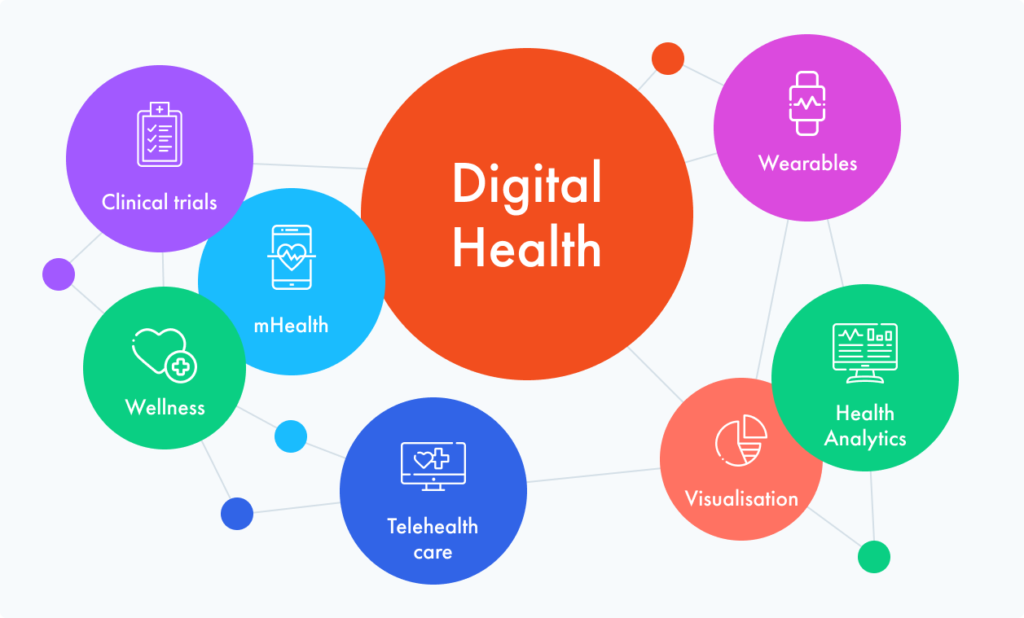
State of HealthTech
Healthtech is a fast-growing vertical encompassing technology, digital services, IT tools, and digital solutions developed to advance healthcare, including administrative productivity and workflow optimization amongst other things.
Leading healthcare and pharma institutions have already moved towards a full digitalization of products, channels, processes, as well as the implementation of analytics that enable entirely new operating models. Modern software systems for registration, diagnosis, orders, billings, and claims are developed with adherence to regulations and privacy policy in mind. These are crucial aspects of building a fully integrated medical IT system.
However, the adoption of modernized software and digitally-enabled tools for process management and treatment has been modest overall. Even electronic healthcare record systems (EHR) were not a part of standard care in some organizations until recently. In a 2020 report, the digital maturity index score of the healthcare industry has grown to almost 60%, which is a significant improvement compared with the 2018 score of under 50%. The adoption rates will be dramatically increased in the nearest future in view of the outbreak.
Rapid expansion of tech-enabled solutions
Digital transformation has never been so urgent. Pandemic has become the catalyst for reimagining the way healthcare should be as it demonstrated the weaknesses of the current systems. Organizations that have been slow to modernize IT systems are now forced to digitize swiftly to provide adequate care. Within weeks, stakeholders realized why the sector needs to catch up.
The outbreak of Covid-19 has also influenced consumer preferences. They turn to digital tech for contactless healthcare and online consultations. The pandemic made all parties more tolerant of the new normals of providing and receiving care. This is probably the most large-scale push towards health digitalization we have ever faced up to date.
Some healthcare businesses have only recently started to modernize their IT systems and incorporate robust health tech. Individual practitioners and large institutions can feel overwhelmed going all in for digitalization. Deciding which innovative technologies will bring more value for your business and address your specific needs is often a tough challenge. Let’s examine the current healthcare landscape so that caregivers will be able to transform the traditional practice approach into a digitally mature machine.
Major digital health trends and opportunities
From online diagnosis to 3D printing and automation, new trends emerging at a pace that is shaping health and social care. We listed some of the disruptive tech advances that helped create a 21st-century health service.
1. Telemedicine takes the front seat
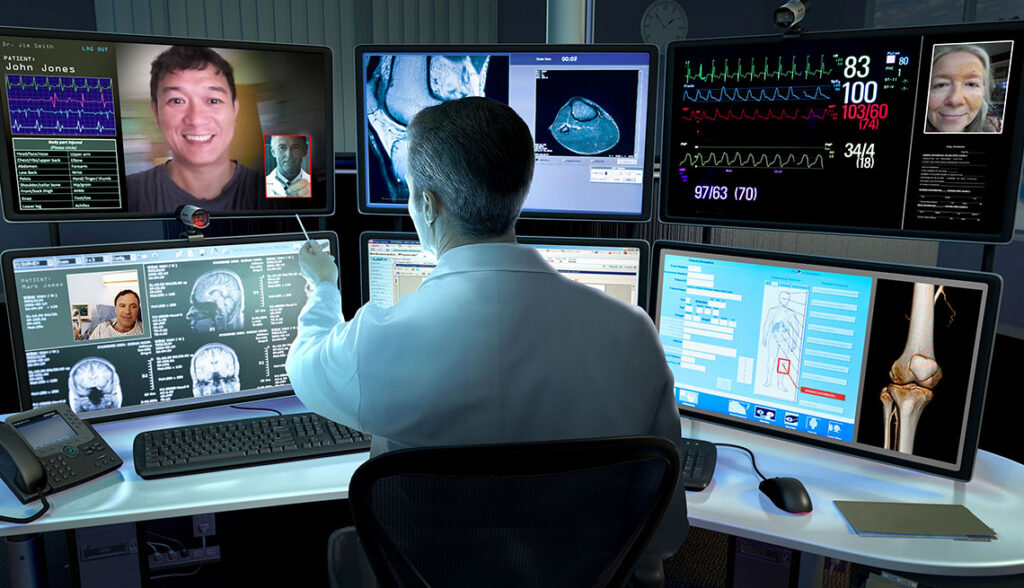
Telemedicine is a transformative tech that makes care services more accessible by enabling people from underserved communities and rural areas to get medical aid they couldn’t otherwise access. This also proves beneficial for urban citizens with limited mobility, as the technology frees them from the need to visit physicians personally, saving hours of wait times. Telehealth has become even more critical due to the outbreak. Hardly surprising that medical organizations are actively investing in this segment of health tech.
Telehealth overcomes barriers to health services caused by the distance between physician and patient and fragmentation of care. So far, video call platforms lead the health service sector, it has also been deployed in orthopedics, physical therapy, cardiology, psychotherapy. Along with medical applications and wearable devices, telemedicine represents an advantageous method for real-time monitoring and efficient care delivery.
More medical specialists will adopt telehealth because the integration of this technology means smaller queues in waiting rooms, less burden on front desk staff, and expanded coverage for enrollees.
2. Wearables and the IoMT captivate industry by storm
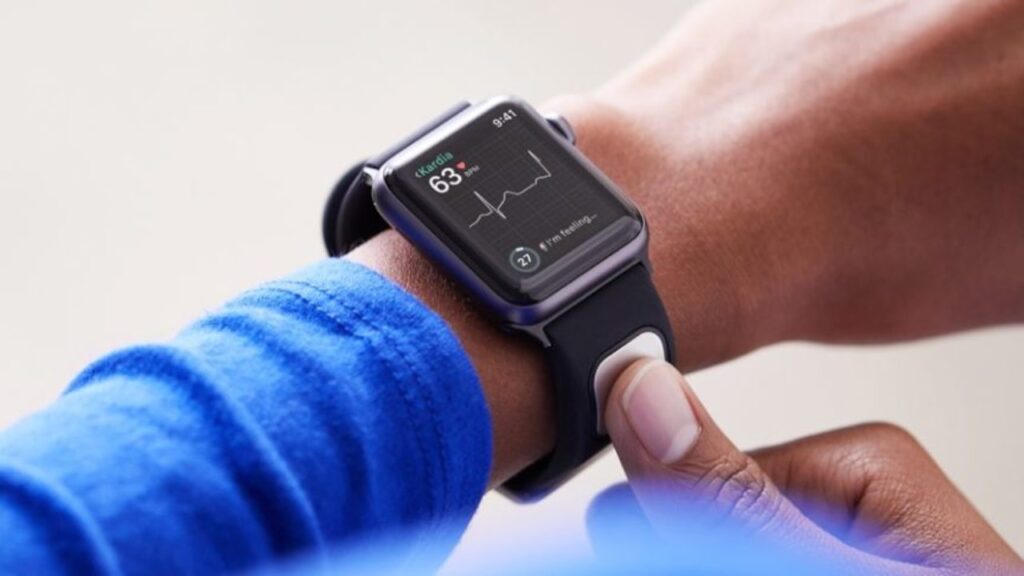
The Internet of Things (IoT) is a network of interconnected smart devices that receive and transfer data via the Internet. The merging of IoT and telehealth creates a range of medical-grade sensors, devices, implants – connected inhaler, ECG, glucose monitoring, to name a few. Healthcare leverages this new Internet of Medical Things (IoMT) collection of specialized devices to measure health vitals and prevent diseases.
In the consumer market, we can observe the widespread adoption of smartwatches and diverse wearables, allowing users to track heart rate or exercise output. As we begin to realize the potential of these technologies, they will be put to even better use in improving medical systems of records. From wearables to smart homes with remote access for healthcare specialists and smart hospitals that will allow comprehensive healthcare management.
Medical smart implants and consumer-facing wearables with features for glucose, blood pressure, cardiac, or ECG monitoring help caregivers collect a wealth of data. Thus, the IoMT tools provide doctors with a better ability to capture vital medical data in real-time, gaining a richer, more accurate assessment of patients’ health conditions.
Given that the population is rapidly aging, the IoMT is especially promising tech. The UN estimates that one-quarter of the global population will be over 65 of age by 2050. This will eventually create a tremendous overload on healthcare. But equipped with technology that enables tracking the health of the elderly remotely and managing their medication will help caregivers to ensure superior care.
3. Mobile Health driven by patients’ preferences
Nearly 5,2 billion people or 67.11% of the population across the globe have mobile devices as of August 2020. People ubiquitously use smartphones for their banking, shopping, food ordering, and traveling needs. So it’s natural they expect the same for healthcare.
Mobile health or mHealth is quickly becoming the patients’ preferred tool for communicating with physicians, accessing patient portals, tracking their vitals, launching online consultations, or receiving e-prescribing.
The mobile health app market has grown drastically within recent years and introduced a lot of value to the sector for both sides.
MHealth encourages healthy living, assists with medication adherence, and allows people to control their health and well-being. Beyond that, users can always access the necessary data to learn about diseases and treatments and have a quick connection with care professionals when they need it. Medical apps make the life of patients more convenient as they don’t need to stand in line to schedule an appointment or pile up medical papers. Mobile technology betters healthcare and delivers practical benefits to prevent, cure, and manage illnesses.
In the meantime, mHealth plays a crucial role in increasing the productivity of healthcare professionals and optimizing their workflows. It helps to reduce paperwork, improve customer relationship management, simplify communication and coordination across the departments. mHealth provides a connected health system with instant access to any health record, medical history, billing, or e-prescription. Optimized data management, higher accuracy in diagnostics, better chronic care management, the opportunities are countless.
Healthcare-related businesses can build a better relationship with their patients and simplify the life of their medical staff by investing in mHealth app development.
4. Cloud computing will be critical for hospitals
The future of healthcare systems resides in the cloud. Hospitals will require advanced infrastructure to operate numerous digital processes and more data to unlock value-based care. Larger storage capacities and sophisticated analytics capabilities are also crucial for getting insights from the data.
Cloud-based solutions will be vital for any organization as they serve essential needs for storing, processing, and analyzing large amounts of data. More than that, companies don’t have to build out infrastructure or worry about maintenance costs when using cloud services.
Though healthcare lagged behind other industries in terms of tech advancements, it’s a leading sector on cloud adoption. We can witness a significant surge in cloud computing adoption by hospitals as more cloud vendors began to cater specifically to the requirements of HIPAA. In addition to strong security, scalability, and flexible subscription-based pricing such providers as Salesforce, AWS, Microsoft deliver robust cloud solutions that health-related companies are opting for.
Healthcare is now leveraging the cloud services to gain efficiencies, automate processes, reduce the costs as there is no need for expensive hardware and in-house infrastructure. Cloud technology promotes data interoperability throughout the entire system and among the diverse segments – insurance, billing, pharmaceuticals. This ensures an integrated view on all the data, seamless information sharing with stakeholders resulting in accelerated care delivery.
Access to Big Data analytics tools
Leading cloud providers offer advanced analytics capacities for the feasible processing of cloud-stored large datasets. Collecting and analyzing massive amounts of medical information helps to get more insights about people’s health and why certain health conditions occur. Big data analytics can provide such benefits as timely patient treatment, personalized care experience, reduced medication errors, effective preventive therapies.
Currently, data-driven medicine is an emerging trend. But in the nearest future, high-powered analytics will be a necessity given the sheer data generated from wearables, mobile apps, social media, EHRs, and other software systems. Medical institutions are opting for cloud as a flexible, cost-effective, and secure infrastructure for their needs.
5. AI to enhance every possible medical process
Artificial intelligence (AI) high-tech promises to deliver plenty of value to the sector. It’s capable of disrupting every aspect of healthcare. AI-powered software and robots can accelerate the speed and enhance the accuracy of the diagnosis, help create individual treatment plans, and provide the optimum drug combination based on the patient’s data.
AI-based image classification systems can identify concerning developments and spot details that escape the human eye, allowing doctors to start treatment at the early stages of a disease. These technologies also provide cutting-edge ways to predict epidemic outbreaks. Moreover, pharmaceutical organizations use ML capabilities for clinical trials and faster drug development cycles.
As it’s a highly promising area, we are likely to see further advancements that will give rise to AI synergy with the IoMT, opening up new opportunities in treatment.
Recognizing the patient as a consumer
Digital tech is just one part of the path to thriving healthcare business. It’s impossible to succeed in the digital health space if a business lacks consumer-centricity and can’t deliver the compelling user experience.
Research by Salesforce, a cloud service vendor, revealed that 47% of patients believe that healthcare is guided by industry needs rather than consumer needs. So it’s safe to conclude that health-related businesses are not viewed as the most customer-centric.
The data-driven approaches implemented by some industries have redefined consumer experience, which hasn’t been realized in the medical sector yet. Tech giants have also set a high bar in consumer expectations that is just mismatched when it comes to healthcare.
Digitization of devices, products, services, and most importantly business models is making healthcare systems more democratized, opening up new values, and marking a new era of healthcare consumerism. Medical companies have to make sure their staff and therapists are not only providing high value, affordable care, but also a digital care experience that meets consumer demands.
Challenges and considerations
This day healthcare IT departments experience some of the most daunting issues associated with the introduction of the health tech advances: the unprecedented upsurge of unstructured data, increased cyber threats, and privacy concerns.
Data processing
The management of the ever-increasing volumes of data clinics collect daily is one of the greatest challenges. While the information is available, it is more often than not incomplete, fragmented, inaccurate, or duplicated.
Cybersecurity and patient privacy
Amid the rapid shift to digital space, full of very personal data, medical institutions are facing challenges concerning security, privacy, and regulatory compliance.
Digital user experience
The end-user must be taken into consideration to create digital solutions that are easy to use by both patients and therapists.
These concerns must be addressed to become a digitally-matured health organization that delivers top-class care and meets the demands of most tech-savvy patients for superior user experience.
How to evolve in a digitized health industry?
Pharma and health organizations must concentrate on the execution of digital strategy to build a commerce model that allows transforming their capabilities and strengths. HealthTech will help you get there, but without a smart roadmap, it would be difficult to achieve the groundbreaking outcomes. Technology Grounds is a reliable enterprise software development services provider that can guide you through the digital healthcare space to create breakthrough experiences with the consumers at the center of your business.


